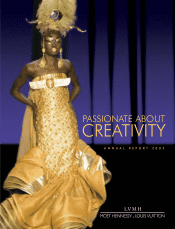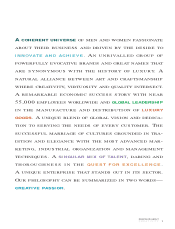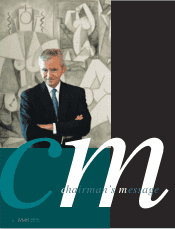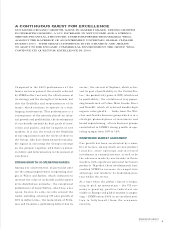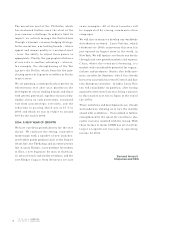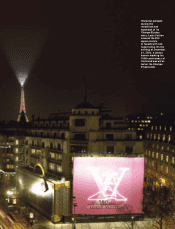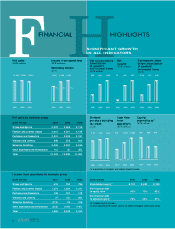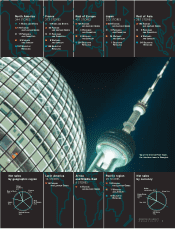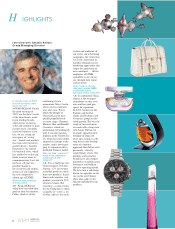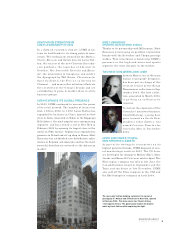Louis Vuitton 2003 Annual Report Download - page 10
Download and view the complete annual report
Please find page 10 of the 2003 Louis Vuitton annual report below. You can navigate through the pages in the report by either clicking on the pages listed below, or by using the keyword search tool below to find specific information within the annual report.
8LVMH ANNUAL
REPORT 2003
HIGHLIGHTS
IFYOUHAD TO SUM UP 2003
IN A FEW KEY POINTS, WHAT
WOULD YOU SAY?
ANTONIO BELLONI: Firstly,
the good earnings in
2003 are the direct result
of the investments made
in our leading brands,
which create recurring
value and continue to gain
market share. Secondly,
in all our business activi-
ties, we are seeing the
emergence of “rising
star” brands and markets
that represent our future
growth drivers. Another
key point is the control
of structural costs, which
has enabled us to free up
funds to invest more in
communications. Last but
not least, all that was
possible thanks to
the creativity and respon-
siveness of our employees,
the true competitive
advantage of LVMH.
WHAT ARE SOME EXAMPLES
OF RI SING STARS?
A.B.: Krug and Ruinart,
which have exceeded their
goals in their key markets;
Celine, which is clearly
confirming its new
momentum; Marc Jacobs,
whose success continues
year after year; Pucci,
which the designs of
Christian Lacroix have
quickly propelled back
to center stage; Chaumet,
Montres Dior and BeneFit
Cosmetics, which are
performing extraordinarily
well. I can also mention
Sephora in the United Sta-
tes, which has successfully
adapted its concept to the
market, and is now mana-
ging its expansion with a
profitable business model.
DOES THE TERM “CREATIVITY”
REFER TO THE COMMERCIAL
SUCCESS OF THE NEW
PRODUCTS?
A.B.: It is actually one way
of measuring it. At Louis
Vuitton, 17% of revenues
in leather goods are made
from new products. In per-
fumes and cosmetics, new
products account for 20%
of total revenues. But
creativity—a central issue
for our Group just as much
as quality is—covers a lot
of other aspects: the archi-
tecture and ambiance of
our stores, our advertising
campaigns, the events that
we create, innovation in
manufacturing processes,
marketing approaches that
target the aspirations of
new consumers … All the
employees of LVMH
contribute to our succes-
ses, through their talent
and creativity.
CHI NA IS ONE OF THE NEW
TERRITORIES WHERE LVMH
IS I NVESTING HEAVI LY.
ARE THOSE EFFORTS PAYING OFF?
A.B.: In continental China,
cognac is the strongest
contributor to sales reve-
nues and has good pro-
spects for expansion.
In 2003, business in the
Fashion and Leather
Goods and Perfumes and
Cosmetics groups accele-
rated growth. This was the
result of the investments
we made with a long-term
view. Louis Vuitton, for
example, opened its first
boutique in China ten
years ago, acting as a dri-
ving force in the develop-
ment of a business
approach that did not exist
previously – directly
owned luxury stores. Our
perfume and cosmetics
brands have also worked
patiently to establish name
awareness and build an
effective operating model.
We have now a solid foun-
dation to capitalize on the
rise on the new Chinese
elites who aspire to the
lifestyle embodied by our
products.
I nterview with Antonio Belloni,
Group Managing Director

